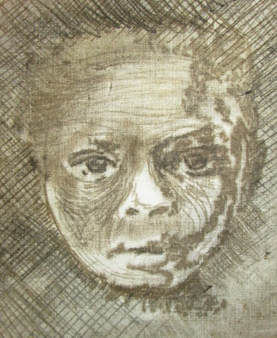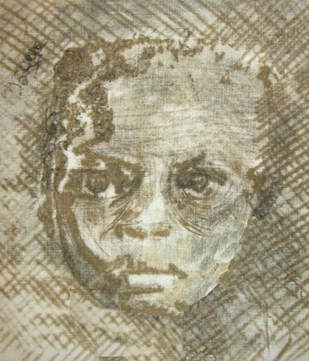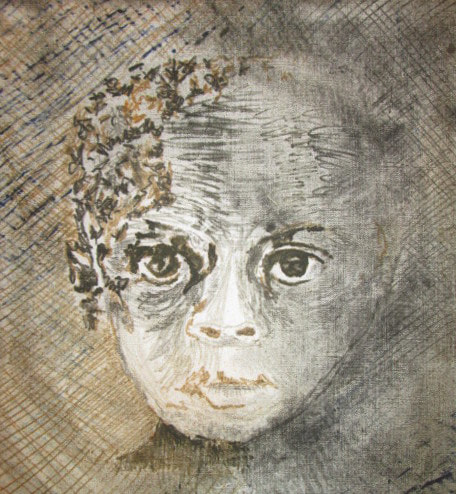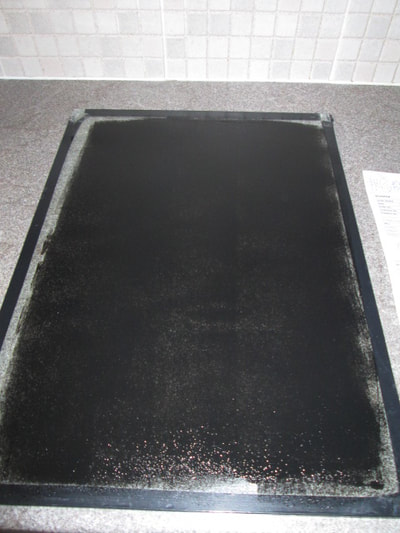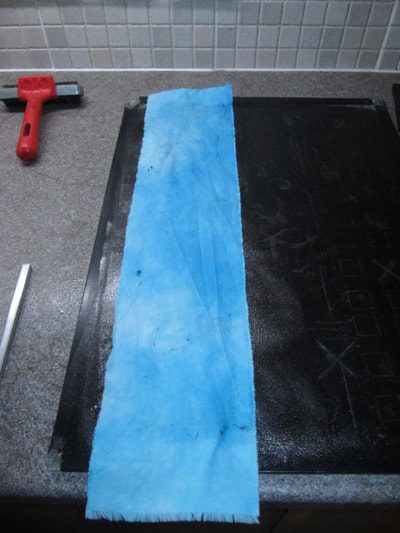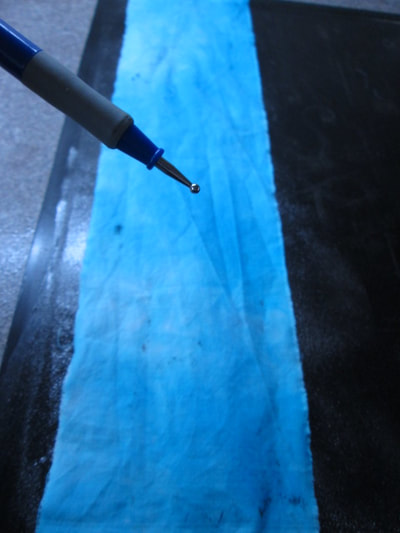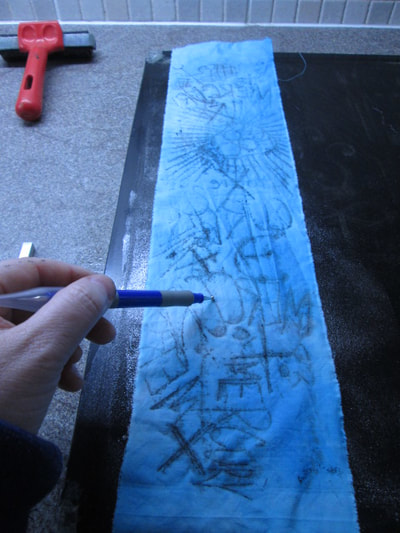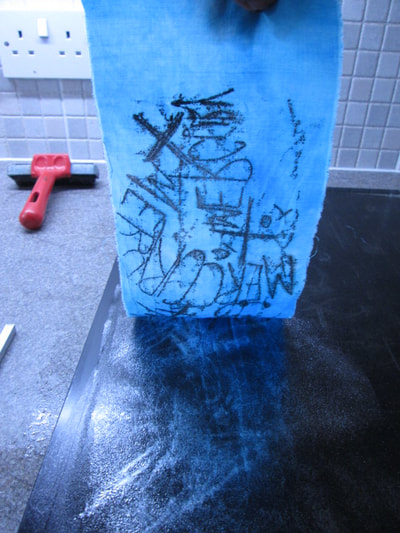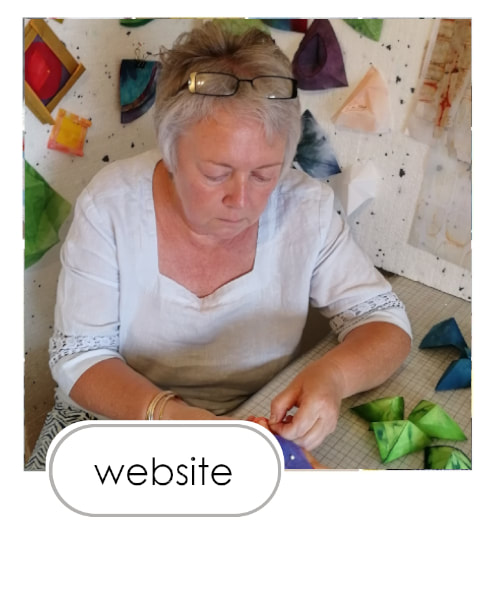|
Whilst lino printing last week I had a lot of ink rolled out on the glass plate. Not wanting to let it go to waste I made a few monoprints onto fabric and paper as well. When creating this type of monoprint I often find there is just too much ink on the plate (no mater how frugal I am) and the first few prints turn out to be very dark and often very blurred, which is fine if that is what you want, but not for what I am looking for at the moment. So, when I want a well defined mono print I often make lino prints first, and then use the remaining ink on glass plate for the monoprints.
I am basing the prints on the same image of the child's face that I used for the lino block. The wonderful thing about the mono print is that is has a softer quality and captures the mood I want for the piece I will use these fabrics in. I especially like the way each time a new print is made the child's face changes in subtle ways, but those eyes keep staring right back at you. To make the prints I very gently lay a piece of plain fabric (in this case a piece of white Kona cotton) right side down onto the inked glass plate. Because there is not a lot of tacky ink left on the plate I find I have very little transference of ink onto the fabric unless I press onto the back. To hold the fabric in place I either use masking tape at the corners or I use my fingertips to press down in strategic areas where I don't mind the ink transferring. The key is to have a light touch and to be careful. From then on I simply 'draw' onto the back of the fabric with a tool of some sort. Knitting needles, cocktail sticks, chop sticks and clay shaping tools are all the type of thing I find suitable. Wherever I draw the fabric is pressed into the thin layer of ink and leaves a line. Shading can be achieved by scribbling, cross hatching, making multiple dots or even by gently using a finger or more blunt tool to press and smooth the back of the fabric. It is something that is good to experiment with. The most important thing to remember is that as you are drawing from the back of the image it will be reversed when you finally lift it up from the glass (important if you choose to write words!). The photos below (reading left to right) are from another piece of work I made a long time ago, but I think they show the process quite clearly. Hover over each photo to see a description of what is going on.
This week I have also dyed a lot of fabric to piece around these images for my first piece about child labour - this one will be about the chocolate industry. Until now I have had only a low awareness of how some of the worlds poorest children are being exploited for our 'guilty pleasure'. Particularly prevalent in the cocoa bean producing regions of Western Africa, where 70% of the world's cocoa is grown (especially in Côte d'Ivoire
and Ghana) children as young as 10 labour on cocoa bean plantations often lured there on false promises of wages or bicycles. Driven by extreme poverty they have little real choice in their lives but to seek work. I wrongly thought that this practice had been closed down long ago, but in fact it is thriving and involves all kinds of human trafficking, forced labour and human rights violations many of which fall under the category of slavery. A quick google search will take you to many websites which show and explain the extent of the problem, demonstrating how all the big chocolate companies are involved in this terrible business. They claim to be trying hard to eradicate the problem, and although there is some effort of their part to make changes, so far their best efforts have not ended the problem and they have effectively kicked the can down the road each time they have been called to account. One way to avoid inadvertently supporting this terrible practice is to pressure the big chocolate companies to pay more for their cocoa - and for the suppliers of the cocoa beans to pay their legitimate employees a decent living wage. Other ways are to buy chocolate from producers who source their cocoa from South America where the use of child labour has been almost completely stopped. A third option is to buy chocolate from people who run their manufacture from 'bean to bar' and can prove their ethical standing. Of course, this chocolate is more expensive, but I am happy to pay it to know I am not supporting the use of children to provide the raw material for my 'guilty pleasure'. Thanks for reading.
|
|
